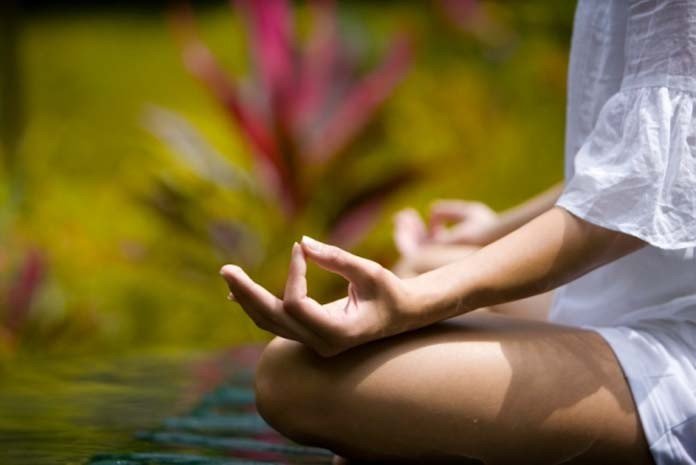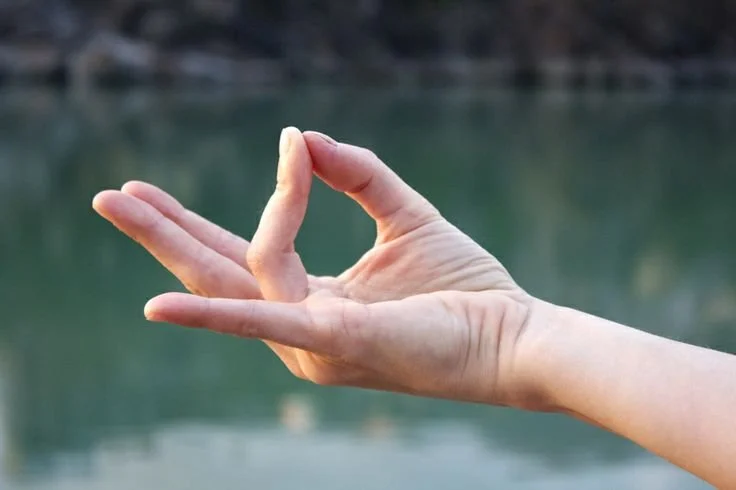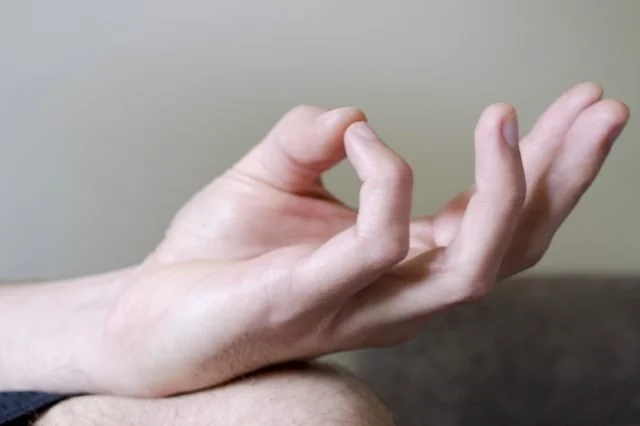Yoga Mudras - An Overview
Yoga Mudras - An Overview
What are yoga mudras?
Aspects of yoga practice are concerned with the relational patterns between different areas on the hand and fingers and parts of the brain. Like the study of reflexology on the feet, the hands have been found to be highly sensitive, potent areas of neural and energy pathways and meridians. Drawing on this wisdom, it has become custom in some yoga practices to focus on the position of hands and fingers during meditation and/or pranayama (controlled breath exercises) as a way to direct or channel the energy flow throughout the body. These are known as ‘mudras’, a Sanskrit term that can be readily translated to mean a ‘seal’, ‘mark’, or ‘gesture’.

Understanding ‘Finger Yoga
The practice of yoga mudra is grounded upon foundational Ayurveda (natural medicine science originating in South Asia, particularly India). Notably, an understanding of the five elements that comprise the universe: space (or ether), air, fire, water, and earth. As we are grains of sands in the great theatre of the universe we too are made up of these elements. Each element has material characteristics and behavioural tendencies. For a simple example, fire has heating properties, and it is volatile, fiery and prone to inflammation; earth has binding properties, and it is abiding, steadfast, and prone to stagnation. We have all these elements and capacities with our psycho-physiological makeup, but our particular genetic expression dictates that certain elements and characteristics are more prominent that others.
“Within this framework of elemental understanding, each finger and regions over the hand correspond to various states of mind and physical processes.”
Each finger represents each element
It is said that each finger corresponds to an element: the thumb represents fire; the first finger represents air; the middle finger is space; and the ring finger is earth and the little finger represents water. When all five elements are working optimally within the framework of our particular and unique genetic expression the body and mind is balanced, energised and healthy; when any one of the elements becomes too dominant within the 'pattern', or polluted, or weakened in our psycho-physiological makeup, the body shifts out of balance. In this case, toxicity builds up and discomfort, illness and disease develops.
Each finger represents mind states and physical processes
Given this elemental understanding, each finger and regions over the hand correspond to various states of mind and physical processes. For instance, air corresponds to movement and transportation in the body, including elimination. Thus when there is an imbalance related to this in the body, a clogged, bloated, gaseous and sluggish colon is often a physical indication. Or, fire corresponds to chemical transformation and exchange in the body, and when this is out of balance, one may experience over-heating, reflux, skin irritations or hormonal imbalance – all of which is heat related.
There are said to be over a hundred mudras, and not all are hand postures alone. Nevertheless, there are four foundational hand mudras:

Gyan or Chin Mudra
This recognizable posture is known as the ‘seal of knowledge’. It is the activation of fire and air. When used in mediation it stimulates the brain and energises the mind, nervous system, endocrine system and pituitary gland. It is considered to encourage and expanded consciousness. It is particularly good for those seeking wisdom/spiritual guidance.

Shuni Mudra
This hand mudra is known as the ‘seal of patience’, and ether and fire are activated. Shuni mudra is said to stimulate focus, perseverance and self-discipline, as it develops a sensation of stability and strength. It is a calming posture that draws one to find poise amidst a flux of thoughts and emotions. It combats anxiety, depression, and emotional instability.

Surya Ravi Mudra
This hand mudra is known as the ‘seal of patience’, and ether and fire are activated. Shuni mudra is said to stimulate focus, perseverance and self-discipline, as it develops a sensation of stability and strength. It is a calming posture that draws one to find poise amidst a flux of thoughts and emotions. It combats anxiety, depression, and emotional instability.

Buddhi Mudra
This hand posture is known as the ‘seal of mental clarity’. The little finger represents water and communication combined with fire in the thumb. When utilised regularly this mudra balances and activates the salivary glands, moisture and lubrication in the body. It encourages openness and fluid, effective communication. It assists in adapting to changes and life challenges.
How do I practice Yoga Mudras?
Sit comfortably in a chair or seated on the floor with the back straight. Scan the body before you begin to ensure you have no discomfort or tension in holding your seating position, and weight is evenly distributed over the hips and thighs. Relax the shoulders and tilt the chin slightly in towards the throat. Place the right hand on the right knee/thigh, and the left on the left knee/thigh with the palms facing upwards. Gently move the fingers into the mudra, making sure that the touch is slight but not slack. Avoid tension and pressing hard down on the hand or fingers. Close your eyes and focus on your breath. Hold the mudra for 10 -20 minutes daily like this to feel benefit. Remember that you can return to the mudra at any time during the day – walking, standing in a queue, relaxing and lying down, etc. The more consistent you are the benefit, like any practice of self-healing.
Sequence of four Mudras for balancing energy
The four mudras described here can be utilised on a daily basis for general wellbeing, energy and balance. Sit comfortably as described above and go through each mudra, holding for around 5 minutes individually.
The four postures are: 1. Thumb to index finger; 2. Thumb to middle finger; 3. Thumb to ring finger; 4. Thumb to little finger.
Would you like to explore how you can integrate mudras into your Hatha, Vinyasa or Yin yoga practice, in order to get the mind-body health benefits you are currently seeking?
Sources and further reading:
Swami Vishnu-devananda, The Complete Illustrated Book of Yoga (1960)
The Mudra Guide Online: http://mudraguide.com/
Art of Living Website: http://www.artofliving.org/yoga/health-and-wellness/mudras-yoga-at-fingertips
Rae Indigo Yoga Website: http://www.raeindigoyoga.com/meaning-hand-mudras/

Join Nina on a bespoke yoga retreat holiday in a range of interesting and unique destinations. Beginners and all levels welcome!

Or, connect with Nina from the comfort of your home for a personalised online yoga and meditation session
